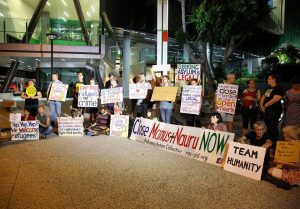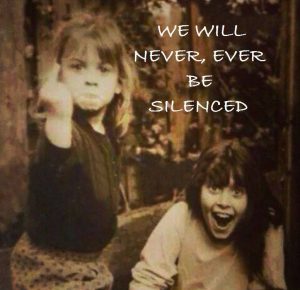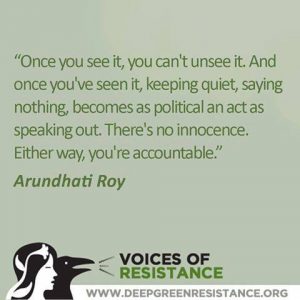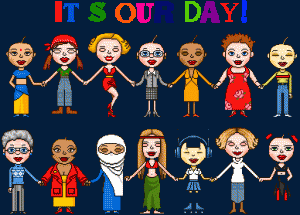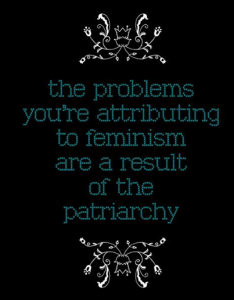This is an article that WEAVE wrote for Parity in 2013. Still very pertinent for today.
How is a lack of feminist analysis within domestic violence and contemporary services contributing to a reproduction of women’s and children’s homelessness and continued risk of domestic violence victimisation?
By Marie Hume, Dr. Elspeth McInnes, Kathryn Rendell, and Betty Green (Women Everywhere Advocating Violence Elimination Inc.)
It is well established that a significant percentage of homeless people in Australia are women and children escaping male violence. According to Homelessness Australia, just over two in every five of the estimated homeless population are women. More women than men seek assistance from the homeless service system each year. Two-thirds of the children who accompanied an adult to a homeless service last year were in the care of a woman, usually their mother, escaping domestic violence. Domestic violence is the most often cited reason given by women presenting to specialist homelessness services for seeking assistance.
The majority of people turned away from specialist homelessness services are women and their children. One in two people who request immediate accommodation are turned away each night due to high demand and under-resourcing.
However, homelessness is not the only problem for women escaping male violence. Male violence against women and children is a complex dynamic which needs specialist women-only services, and we would argue, feminist responses to help women be safe and be empowered.
Many organisations providing services to women attempting to escape from all forms of violence are hampered in their ability to operate from a feminist perspective.
There are a range of reasons for this, such as the defunding of progressive women’s services; the growing divisions between different types of services; funding and output measurement tools focusing on individual change; and the sharp shift in the provision and focus of services, away from a social recognition of men’s violence against women and towards an individual pathology of women’s poor choices and victimisation. In fact women’s services are currently at serious risk of being de-politicised. (Hume, McInnes, Rendell & Green 2011).
In order to provide support and help to women escaping male violence our services must firstly listen to and respect women’s experiences of violence. Women are the experts in this experience and over years have learnt survival mechanisms. They are experts of their own survival. Our role is to help women find their own pathway to safety and to help them negotiate the systemic barriers to such safety.
Feminist practice, according to Davies, involves…
“…‘woman-defined advocacy’: …advocacy that starts from the woman’s perspective, integrates the advocate’s knowledge and resources into the framework, and ultimately values her thoughts, feelings, opinions, and dreams—that she is the decision maker, the one who knows best, the one with the power.” (Davies et al., 1998, pp. 3-4, cited by Laing, 2001))
Women’s services throughout Australia are struggling to maintain a feminist perspective in supporting women escaping male violence. They labour against systemic structural barriers; and ideological and policy determinants.
Policy determinants have led to many domestic violence services operating in an increasingly medical model, where the responsibility for their safety is placed on individual women and focus for change is on victim, rather than perpetrator. Often male perpetrators become invisible in service provision.
An example of this is the South Australian Homeless 2 Home (H2H) client and case management system.
All specialist homelessness agencies in South Australia are required as part of their funding agreement to use this system. In the assessment process workers are required to assess women.
This covers areas such as “Anger and mood management; emotional, educational and employment stability” and sets out goals that should be addressed in providing a service to women. The domestic violence status of the woman’s exposure to violence is minimised in the assessment process, with the focus on her individual deficits. Practitioners are not directed to any mention of the structural inequities that women face when escaping from domestic violence. Rather the assessment process seems to be operating on a deficit model of service provision, where the woman, identified as “the client” is judged as deficient because she is a victim.
The focus in the provision of services for women has shifted from the structural to the individual. Rather than being sites of political activism, based on the sharing of common experiences and self-help, women’s services have become sites of professionalised therapeutic intervention. Women are increasingly being treated as victims in need of professional help – and even seen by some services as the source of ‘the problem’ of violence against women.
As community providers increasingly replace government provision there has been an accompanying trend away from consulting the people using the service, to those providing the service. Services report to governments about what their clients need, positioning themselves as experts on the issue, rather than the people going through the situation of need. The voices of professionals are increasingly privileged at the expense of those needing the service.
Karen Webb in DVRC quarterly article states that there are “higher demands from funding bodies to demonstrate measurable outcomes” which impacts on how services operate.
“McDonald (2005) argues the feminist analysis of family violence has experienced ongoing silencing due to an increased accountability attached to government funding in addition to an increased focus on individual empowerment. Due to human services being subjected to a competitive market, family violence programs are forced to produce measurable outcome-based data.”(Webb, 2012, p.6)
For homelessness services this translates into reducing the numbers of women victims of violence by professionals working to reduce their assessed pathology, as expressed in ‘mood problems’ or ‘unemployment’. This trend can be seen to be broadly linked to policy and funding decisions of governments over time, as well as the backlash against both feminism and women which has become evident in public debate.
Increasingly, particularly during the years of conservative government, funding was directed away from many progressive women’s organisations and towards men’s rights groups and conservative organisations. In addition, government policy was such that funding agreements with recipient organisations prohibited funded agencies from challenging government policy and practices.
Davies et al. (1998) trace the impact of responses to domestic violence over the last 30 years, which have resulted in what they term ‘service-defined advocacy’ in which ‘advocates fit women into the services available without understanding their plans’ (p. 17)(as cited by Laing, 2001)
Increasingly, services for women are being outsourced to generic, and often faith-based, organisations. The result of such outsourcing is that women-only services are becoming less available. It also means that many of these non-government organisations are often providing broad based family services. Not only do they not have a feminist analysis of violence against women, but ideologically their faith defined pro-family stance operates to discount or deny women’s experiences of violence.
Dr Lesley Laing cites a number of theorists who argue that there has been a shift away from a feminist, social and advocacy response to domestic violence to a medicalised, psychological view of domestic violence. She cites Gondolf who attributes these changes…
“…to both the growing involvement by mental health experts with the issue of domestic violence and to the pressure experienced by some refuges to secure funding by developing their services in line with more conventional social welfare agencies. Via processes such as these, it is argued that ‘a severe and political problem has been transformed into a psychological one’” (Gondolf & Fisher, 1988, p.2 cited in Laing, 2001 p. 3.)
We would also argue that the increase of the professionalization of women’s services frequently has resulted in professional practice paradigms that have not been grounded in feminist theory and practice.
Alongside of this has been the medicalization of women’s issues which has occurred concurrently with the decline in political activism. Medical/ therapeutic models of service delivery have become increasingly forced upon the women’s sector, with an emphasis on women’s pathology, individual therapeutic responses and personal healing. (See South Australian Homeless 2 Home (H2H) client and case management system.)
An example of this is the recent introduction of the Empowerment StarTM into the Victorian family violence sector. This program is described by Karen Webb as a casework outcomes measurement tool designed specifically for programs aimed at supporting women who have experienced family violence. Karen Webb:
“…primary focus of the tool is to measure and document the changes in a survivor’s attitude, motivation and behaviour toward an end goal. The language used in the tool reflects a number of problematic assumptions.”(Webb, 2012, p.6)
She argues that the assessment tool “privileges the worker’s ‘expert’ view over the survivor’s.” (p.7) and tends to make women responsible for creating change and being responsible for establishing safety for herself and children. She argues that the use of such a tool is…
“Reinforcing the idea that each individual woman needs to be ‘empowered’ in order to avoid violence only lowers the accountability of abusers and society. This is not empowerment nor does it fit in within a feminist framework: this is silencing and maintaining the status quo.”(Webb, 2012, p.9)
This is an example of neo-liberalism’s co-option of the word ‘empowerment’. It implies that women expose themselves to violence by making poor choices of relationships with violent men, or by displaying irritating behaviour which provokes men to violence against them. It creates a perspective wherein the role of services is to ‘fix’ women’s desires to make poor choices and cure them of being irritating to men. Men’s use of violence remains invisible and the targets of the violence become responsible for causing it.
The Federal Government’s Australian Institute of Health and Welfare has created a data collection programme (S.H.I.P) which collates personal information in relation to women who seek support from women’s shelters. Many women’s shelters are required to provide such confidential and personal information if they wish to continue to be funded.
The information gained in this data collection is used to enable governments and the community “to make informed decisions to improve the health and welfare of Australians”.
However, much of the data collected is framed in terms of housing rather than domestic violence, which results in the core business of women’s domestic violence services moving away from domestic violence to homelessness. Placing women in a “safe” home does not mean that women are safe.
The reality for women escaping male violence is that there exists a range of systemic failures which prevent women from achieving real safety. For example, it is well documented that separation is the most dangerous time for women and children and that women can be subjected to ongoing abuse, harassment and stalking for years after their separation (Bagshaw, Brown, Wendt, Campbell, McInnes, Tinning, Batagol, Sifris, Tyson, Baker & Fernandez Arias 2010 p77). Despite this, the Australian family law system consistently fails to acknowledge and account for domestic violence and child abuse. In the majority of cases the family law system continues to expose women and children to ongoing violence and abuse by forcing women and children to maintain relationships with their abusers as a result of court orders for access between children and their abusive fathers.
“To maximise the effectiveness of interventions with women who have experienced violence, it is important that practice models emphasise women’s safety and perpetrator accountability; explore and validate women’s experiences; acknowledge strengths and avoid pathologising women; attend to the diverse cultural and social contexts of women’s lives; and locate the range of interventions within the wider socio-political context.” (Laing 2001, p 14-15)
If a collective feminist consciousness of men’s violence against women is to be regenerated, politicians, policymakers, human services professionals and managers need to once again listen to women’s voices. Women’s experiential knowledge of male violence must inform collective action that commands government attention in demanding social change.
Visit WEAVE’s Facebook page
Bibliography
Davies, J., Lyon, E., & Monti-Catania, D. (1998). Safety Planning with Battered Women: Complex lives/difficult choices. Thousand Oaks: Sage as cited in Dr Lesley Laing, 2001 “Working with women: Exploring individual and group work approaches. “Australian Domestic & Family Violence CLEARINGHOUSE Issues Paper 4 2001
Gondolf, E. W., & Fisher, E. R. (1988). Battered Women as Survivors: An alternative to treating learned helplessness. Massachusetts/Toronto: Lexington Books.
Hume, M., McInnes, E., Rendell, K. & Green, B. (2011). Women’s services in the 21st century: Where are we heading? Australian Domestic & Family Violence Newsletter, 46, pp.3-4.
Laing, L. (2001). “Working with women: Exploring individual and group work approaches. “Australian Domestic & Family Violence CLEARINGHOUSE Issues Paper 4 2001
Webb, K (2012). “empowerment or compliance? making women responsible for change” DVRC Quarterly (Domestic Violence Resource Centre, Victoria) Spring/Summer
https://www.homelessnessaustralia.org.au/UserFiles/File/Fact%20sheets/Fact%20Sheets%202011-12/Homelessness%20&%20Women%202011-12%288%29.pdf
https://www.sa.gov.au/subject/Housing,+property+and+land/Customer+entry+points+and+contacts/Homelessness+services+provider+entry+point/Client+and+case+management+system
https://www.sa.gov.au/upload/franchise/Housing,%20property%20and%20land/Housing%20SA/h2H_manual_section_4.pdf
https://www.aihw.gov.au/privacy-of-data/








